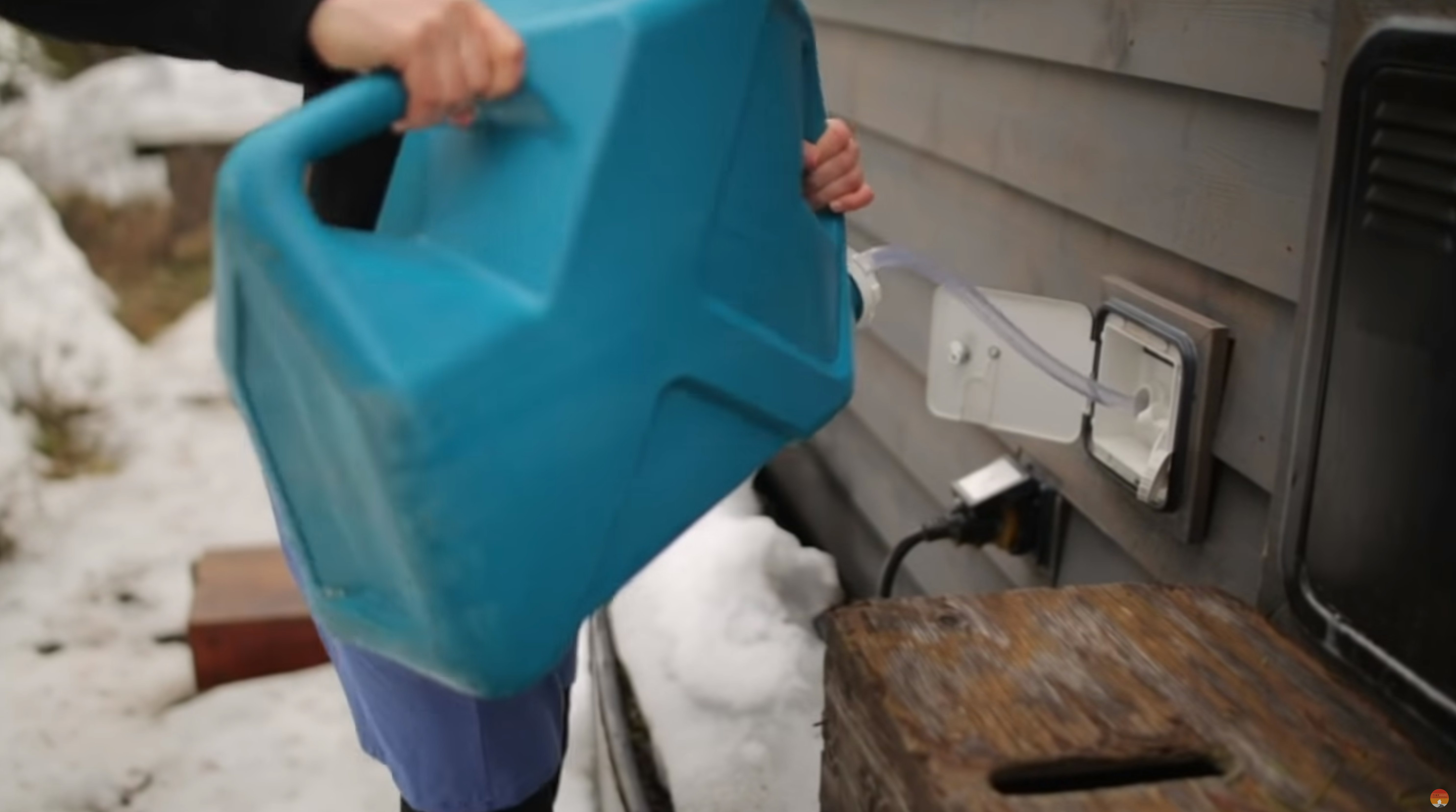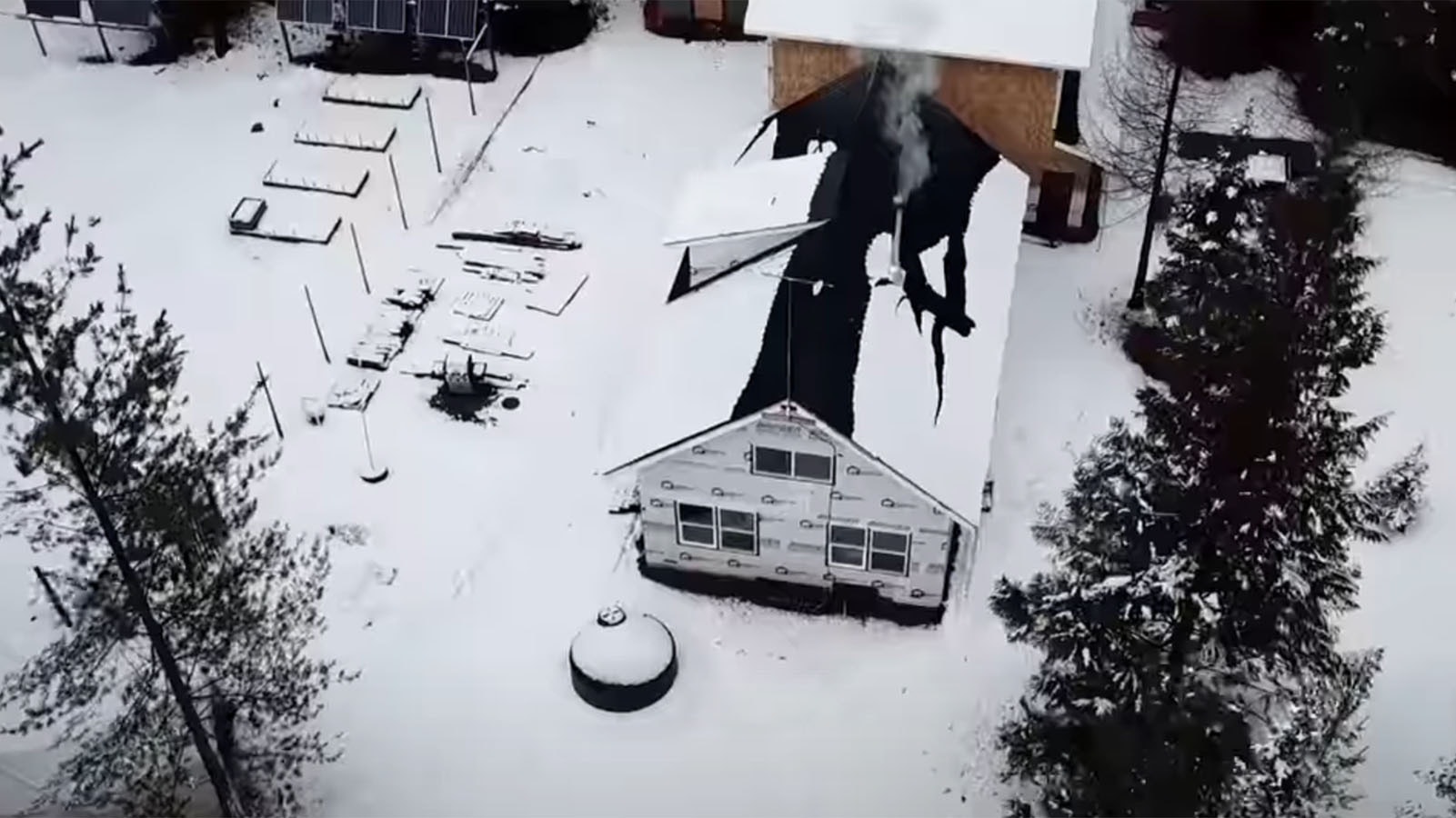Once you’ve decided to pull the trigger and establish your dream off-grid lifestyle in rural Wyoming, you go out and find some land to homestead.
While it may be exciting to start building and setting up your new home, there’s a less sexy — but critically important — question to answer: Where’s your water coming from?
When buying rural land in Wyoming, developing water on the property is the most important consideration. Creating a backup water system on a home in town also is an option that some urban residents use to save money and be more self-sufficient.
Running hot and cold water on demand is something most people never give a second though to, until it stops flowing.
People on municipal water systems in the United States don’t need to do much other than pay a monthly bill to ensure a steady supply of clean water.
Most Americans don’t give a second thought to performing chores like washing the car and then hosing down the driveway, irrigating lawns and flower beds, or just letting a tap run while they brush their teeth.
The average American household wastes 90 gallons of water every day. According to the U.S. Environmental Protection Agency, that adds up to 10,000 gallons of wasted water per household per year and more than 1 trillion gallons per year if you tally the national average.
Waste Not Want Not
On an off-grid homestead, water is a valued, even precious commodity.
Homesteaders who begin their off-grid journey with a water well in place on their property have the option to develop around that existing water source. It comes with higher upfront cost, but also allows for an easier transition from a modern home.
Budgeting water usage is another scenario altogether for homesteaders on a pay-as-you-go plan who choose to live in a dry cabin without plumbing. Every gallon must be hauled in jugs, and the amount of water needed for every chore is carefully scrutinized.
That’s what Ariel McGlothin does on her off-grid homestead in Western Wyoming, which she vlogs about on her popular YouTube channel “Tiny House Expedition,” which has more than 400,000 subscribers.
At her off-grid house, McGlothin hauls water in large jugs, which she uses to fill her home’s indoor water tank.

Water Wells
Several options exist for developing back-up water systems in residential areas, used when municipal systems fail, or developing a primary system for an off-grid homestead.
They include harvesting rainwater, drilling water wells and making use of surface water sources.
A well is where most rural properties in Wyoming draw water from. A well can provide all of the same water-related conveniences to a rural property as a municipal system provides to those who live in a town.
More than 75% of Wyoming’s population relies on groundwater for all or part of their drinking water needs. There are more than 90,000 of these water wells in Wyoming, according to the state department of environmental quality.
Private well owners are responsible for their own maintenance and water testing. Wyoming DEQ recommends yearly testing for e coli and nitrates. The agency recommends testing for arsenic, lead, copper, iron, manganese, sulfate and total dissolved solids every five years.
“Uranium, radium, selenium and methane are also common constituents in Wyoming groundwater,” according to DEQ.
Cost Considerations
The cost of a water well on a rural property is a major consideration.
Dave Newton Drilling in Worland provided a ballpark water well estimate for Cowboy State Daily. The company charges $7,500 for the first 40 feet which includes surface casing and a surface casing seal.
After that it will cost $82 per foot and the cost of the pump is not included. Pump costs run about $1,000 per horsepower. The horsepower level of the pump depends on how far the pump will have to lift the water from the bottom of the well and then push it horizontally into a tank for storage.
A ballpark cost for a 200-foot-deep well is $20,000. That doesn’t include an underground storage tank, pressure tank or a filtration system that will be needed for a conventional home set up.
It also leaves out the cost of whatever system you choose to power the well. Solar or generator powered systems are available for off-grid living. Solar powered wells are fairly common for livestock watering systems.
In Wyoming, the state owns the underground water resource. A permit for a rural home costs $50.
Jimmy Gordon, executive director of the Wyoming Water Well Contractors Board, said wells should be tested regularly to ensure the water is safe to drink. He said in some parts of Wyoming the water is not safe to drink or is too deep to justify the cost of drilling a well.
He said some water well contamination problems can be corrected with reverse osmosis or filtration systems, but there are no guarantees if a drilling contractor can’t find good water beneath your property. The contractor is going to bill you whether he finds good water or not, Gordon said.
“There are some places in Wyoming where the water produces a strong sulfur smell and other places where the water is so deep that it makes it prohibitive to access,” Gordon said. “A good, simple rule of thumb is to look around the neighborhood. If you see green, that’s a good sign. Are people irrigating? Are they hauling water?”
Time spent researching upfront is a good investment. Gordon said the Wyoming State Engineer’s office keeps water well records as do individual counties.
“A well driller can show up and drill 500 feet and not hit water and you still have to pay for that cost,” he said. “Research up front is well-invested in dealing with water wells in Wyoming.”
Rainwater Harvesting
Rainwater is free, is delivered for free and is of the highest quality possible for naturally occurring water.
An article written by Tony Hoch, former director of the Laramie Rivers Conservation District, states that rainwater harvesting can be “very effective,” in Wyoming. Hoch writes that it’s critical to calculate the square footage of a roof in order to understand how much water flows off a roof during a rain event. Then to be sustainable in an arid climate, the system must be capable of catching all of the water that flows off the roof.
Hoch studied systems in New Mexico where the annual rainfall is about half of Wyoming’s annual rainfall. He calculated the amount of water that will fall on an 1,836 square-foot roof during a storm that delivers just over one inch of water to be 1,373 gallons.
This example is on the high end of most rain events in Wyoming, Hoch wrote. But it provides a good idea of the size of cistern needed to efficiently harvest rainwater in Wyoming.
There are several states that regulate rainwater harvesting. Wyoming is not one of them. According to the U.S. Department of Energy, there are 18 states with no rainwater regulations and harvesting is encouraged. There are 10 states where rainwater harvesting is not illegal and have no regulations (Wyoming included). There are 15 states with state regulations and incentives in place, and two states where limited rainwater collection is allowed.
The two states with the most restrictions are Colorado and Nevada. Colorado allows residential properties to collect only 110 gallons of rainwater for outdoor use per year. Residential properties on a private well can collect unlimited rainwater from roofs in Colorado.
In Nevada, residents are allowed to collect rainwater from the roof of their home only for non-potable use.
The nuts and bolts of a standard rainwater collection system are fairly basic. Commercial kits are also available. The water is caught in rain gutters when it comes off the roof. From there it flows to a downspout with a screen attached to catch leaves and other debris. The water then flows downward through four-inch pipe to a T at the top of a diverter. The diverter is a piece of four-inch pipe about four feet long with a cap at the bottom.
When a rainstorm begins the dirt and debris that makes it past the screen will flow downward until it fills up the diverter. When the diverter fills up with water it catches whatever foreign material comes off the roof and then begins to flow water through the T and into a tank or underground cistern. The cap on the diverter must be removed periodically and drained to keep the system clean. The water can be filtered a second time before it flows into the tank.
Often Not Enough
While harvesting rainwater is efficient and as self-sustaining as it gets, it’s many times isn’t enough to provide fully for an off-grid household’s water needs.
That’s when other systems like gravity-fed water tanks and other on-site storage that requires homesteaders to fill up periodically.
In his popular YouTube channel “Martin Johnson Off Grid Living,” Johnson explains his off-grid water system, which revolves around a gravity-fed tank he has to fill up. It’s 2,500 gallons and flows into a 120-volt water pump in the home’s crawl space to provide running water.
“We dug a hole and buried it 3 feet deep,” he explains in a video tour of his water system. “The water comes out of the bottom of the tank and runs down along the side of the house, then turns … and goes into the crawl space.”
Surface Water Development
Off-grid properties in Wyoming with existing surface water, like a pond, stream or river are going to be both hard to find and expensive. However, there may be some reasonably priced land that comes with a water right. In this case the landowner will need to figure out how to convey the water to the property through a ditch or pipe.
From there, the water can be pumped into a tank or cistern and filtered for non-potable uses.

Other Stories In This Series
Off The Grid In Wyoming: Choose The Right Spot For Your Modern Homestead
Off The Grid In Wyoming: It’s Not That Simple To Live Simply





